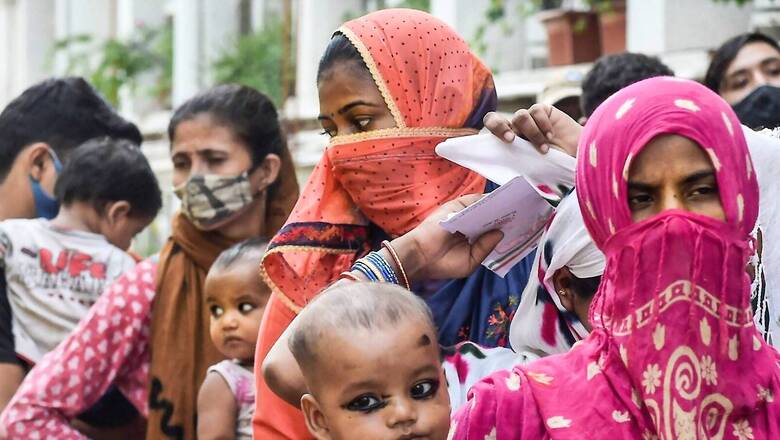
views
In the healthcare sector, relevant and accurate data has become everything. Public health across the globe can be tremendously improved with the help of accurate and timely data. But data on women’s health has always remained in the dark. Several surveys and reports have repeatedly shown that “Missing Women,” a term coined by Indian economist Amartya Sen, is a global problem. This underreporting of females has come to light yet again. A recent research study has demonstrated that many countries have failed to report female infections throughout the pandemic equally.
In a fast-paced, digital world, data becomes essential at each step. Developing a blind spot for continued underreporting adds to the “normalisation” of men representing the entire population’s health. The missing data is a significant impediment to a country’s holistic development and improvement in overall health. It is now that the world should turn towards addressing and filling in the data gap; otherwise, we would fail to produce better outcomes for women’s health.
What Does the New Study Say?
A recent study by Yeva Aleksanyan and Jason P. Weinman titled, “Women, Men and COVID-19” investigates the effect of the COVID-19 pandemic on gender-based health disparities. The data taken from 133 countries suggested that as high as 14% of the countries reported that over 65% of their COVID-19 cases and deaths were among men. Furthermore, countries like Bahrain and Qatar reported 88% and 85% confirmed cases among men. Over 74% of total COVID-19 deaths in Chad, Bangladesh, Malawi and Pakistan were among men.
The study suggests that the data collected in many such countries might not tell the accurate story because women are “underreported”. The research also shows that more considerable differences in male and female COVID-19 cases and death rates can be accounted for due to gender disparities in families.
The Larger Issue at Hand
The new report might just highlight the case of “invisible women” during the pandemic. But the issue has always come into the picture time and again in various instances. Usually, it is the male bodies that are researched, reported and represented for studies, surveys and trials. And the results produced are hardly significant and right for improving health outcomes for women.
The notion that “women are like men” becomes even more trivial and problematic with this negligence. In her book, Invisible Women: Data Bias in a World Designed for Men, British journalist and feminist activist Caroline Criado Perez argues that the data our society collects is typically about men’s experience, not women’s. The issue is not only limited to women but also stretches to underreporting of transgender and non-binary people. The lack of data on more than half of the world’s population reveals a lot about the society we live in.
Why Does Underreporting Happen
Many countries worldwide prioritise only men in terms of education, health, and overall well-being. Female health issues are frequently ignored and hidden. The health data and consequently the health outcomes amongst women are intrinsically linked to their status in society. In many parts of the world, women are merely looked upon as an economic burden and hence their health is regarded as secondary.
Furthermore, they have little autonomy of what to do with themselves and therefore they can’t even get themselves tested, treated or reported. The lack of autonomy can be attributed to both low education levels and lower participation in the formal sector. It has been proved time and again that social factors such as gender discrimination are significantly associated with larger variations in male and female data discrepancies in the health domain.
The implications of Underreporting
This “gender data gap” in reporting has a knock-on effect on women’s health outcomes. This has ramifications for future generations’ health as well as the health of the entire family. Without data, no results can be declared about how a particular disease affects men and women differently. For instance, most information on symptoms and treatments of heart attack available in the public domain represents men. Women, when researched, have shown different symptoms. The underlying problem is that women’s cases were not reported and hence not taken into account. Furthermore, lack of data acts as a hindrance to women’s empowerment. Most policies, acts and programmes fail to work because policymakers, researchers and health experts have limited to no data.
Many countries are still struggling to work on reducing the health inequity in their regions due to a lack of disaggregation of health data on the basis of sex. In order to bring about transformative policies that improve the health of the entire population, data division, which is done from a gender perspective, becomes important. More importantly, it helps in creating an understanding of societal norms, expectations and roles of women and men that affect their health differently. Underreporting inevitably leads to failure in sex-disaggregation of health data. This ultimately results in creating barriers for allocating appropriate resources and building capacity to implement equitable health systems.
The Way Out
Societal factors play an important role in the health outcomes of an individual. These outcomes can only be worked upon if data is readily and vastly available. The case of the COVID-19 pandemic is no different. Since most countries have reported men getting more infections, it is clear that infections in women didn’t end up in statistics. This could also imply that women in many areas did not receive timely and adequate care.
There is no one-size-fits-all answer to an issue that has got so entrenched that it has become normalised. But that doesn’t mean nothing can be done. More efficient health information and tracking systems can help in collecting reliable data. Regular and responsible surveillance can also help in getting more women to report their symptoms. All pandemic responses should take into account how gender affects an individual’s needs and constraints. But most importantly, efforts must continue to be monitored in the direction of education and raising awareness. Although it still remains to be seen if higher levels of literacy levels and awareness among citizens lead to better data outcomes, there is still a hope that educating all is a pathway to reduce societal gaps and achieve health equity.
Mahek Nankani is Assistant Programme Manager at the Takshashila Institution. The views expressed in this article are those of the author and do not represent the stand of this publication.
Read all the Latest Opinion News and Breaking News here




















Comments
0 comment